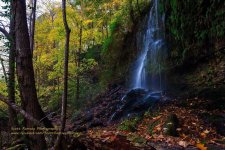Hi,
So I do a lot of landscape photography and I've noticed that every waterfall I've been too, I have been unable to get a really 'silky' looking waterfall / water as no matter what time I've been its always very bright.
Therefore I've been looking at buying a Neutral Density Filter and then a circular polarizing filter just to bring out the colours of landscapes etc.
As a new photographer, do you guys have any recommendations? i.e. should I buy them both? Start with an ND first OR CP?
In regards to the above question, I'm tossing up between an ND4 and an ND8 ; Is it better to go for a higher ND? i.e. 8 just in case I need the extra? Or better to start with a lower? ND4 for example.
I'm shooting with a D3200 with kit lenses.
Cheers!
So I do a lot of landscape photography and I've noticed that every waterfall I've been too, I have been unable to get a really 'silky' looking waterfall / water as no matter what time I've been its always very bright.
Therefore I've been looking at buying a Neutral Density Filter and then a circular polarizing filter just to bring out the colours of landscapes etc.
As a new photographer, do you guys have any recommendations? i.e. should I buy them both? Start with an ND first OR CP?
In regards to the above question, I'm tossing up between an ND4 and an ND8 ; Is it better to go for a higher ND? i.e. 8 just in case I need the extra? Or better to start with a lower? ND4 for example.
I'm shooting with a D3200 with kit lenses.
Cheers!

